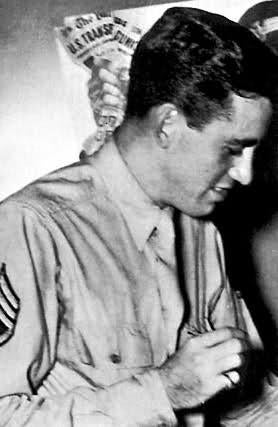Dear Holden, if you really want to hear about it, I had a lousy day, and I’d rather not go into it, if you want to know the truth. Are you still wearing that hat?
Some of us may have fantasized about corresponding with Holden Caulfield, the unforgettable narrator of J.D. Salinger’s The Catcher in the Rye. One young woman got to live the next best thing: On Wednesday, the New York Times introduced us to Marjorie Sheard, who exchanged a series of nine letters with the 22-year-old Salinger between 1941 and 1943. He was an untested, aspiring author, full of worry and bluster. She was a fan who had read his earliest short stories in Esquire and Collier’s, and wanted to be a writer herself. The letters lived in a shoebox in Sheard’s closet until six years ago, when Sheard moved to a retirement home and entrusted them to a relative. Recently, the family sold the trove to the Morgan Library and Museum, which shared them with the New York Times. They are the kind of letters that reward our sometimes foolish desire to feel close to a favorite author, especially one as elusive as Salinger. At one point, “Jerry S.” tells Sheard to keep an eye out for his latest work in The New Yorker, “the first Holden story,” about “a prep school kid on his Christmas vacation.”
Salinger himself comes off as the caustic, brilliant, insecure friend you are constantly justifying to your other friends. Yeah, he can be a jerk sometimes, but he doesn’t mean it. His brain is wired differently from the average person’s, try talking to him one-on-one. Of one (lost) story he’s working on, he writes, “It will doubtless tear the country’s heart out, and return the thing a new and far richer organ.” And then he demurs: “(I’ll probably fail completely with it.)” It’s that same blend of pride, fervor, and self-doubt that has endeared Holden to millions of readers. And Salinger, like Holden, can be an unreliable narrator. He sneakily massages details about his relationship with Oona O’Neill to imply that he broke up with her. (In fact, it was the other way around.) His flip reports from army bases in Fort Monmouth, N.J., and Bainbridge, Ga.—he signed them “Fitzdudley,” “Wormsley-Bassett” and “Flo and Benjy”—belie his apprehension about joining the war effort.
The letters are also a seedbed for counterfactuals. What if Sheard had been discovered as well? What if the two had met face to face? Salinger’s letters breathe a casual sexism that makes you wonder if Sheard’s prospects as an author would have been better in 2013 than they were in the early 1940s. “Seems to me you have the instincts to avoid the usual Vassar-girl tripe,” he tells her at one point. A month later, he asks, “What do you look like?” When she sends a picture in her next missive, he scolds her, albeit flirtatiously: “Sneaky girl. You’re pretty.” According to Liza Sheard, a niece of Marjorie’s, her aunt “never became a published author and lived most of her life as a housewife in a modest apartment.” It’s tempting to project the articulate, opinionated young woman—who said of reading Fitzgerald and Hemingway, “one feels oneself tricked into feeling sympathy for entirely undeserving and rather tiresome people”—into a future as alert to female talent as it is to male.
There’s a poetic rightness to the Morgan Museum’s new find. No form is as intimate as a letter, and Salinger’s most famous novel reads like a direct note to the reader. Arguably, we’ve all been Holden Caulfield’s pen pal, even if we haven’t all written him back. His creator—the reclusive, slippery Salinger—is a different story, which makes this glimpse at the young “Jerry S.” all the more delightful.
